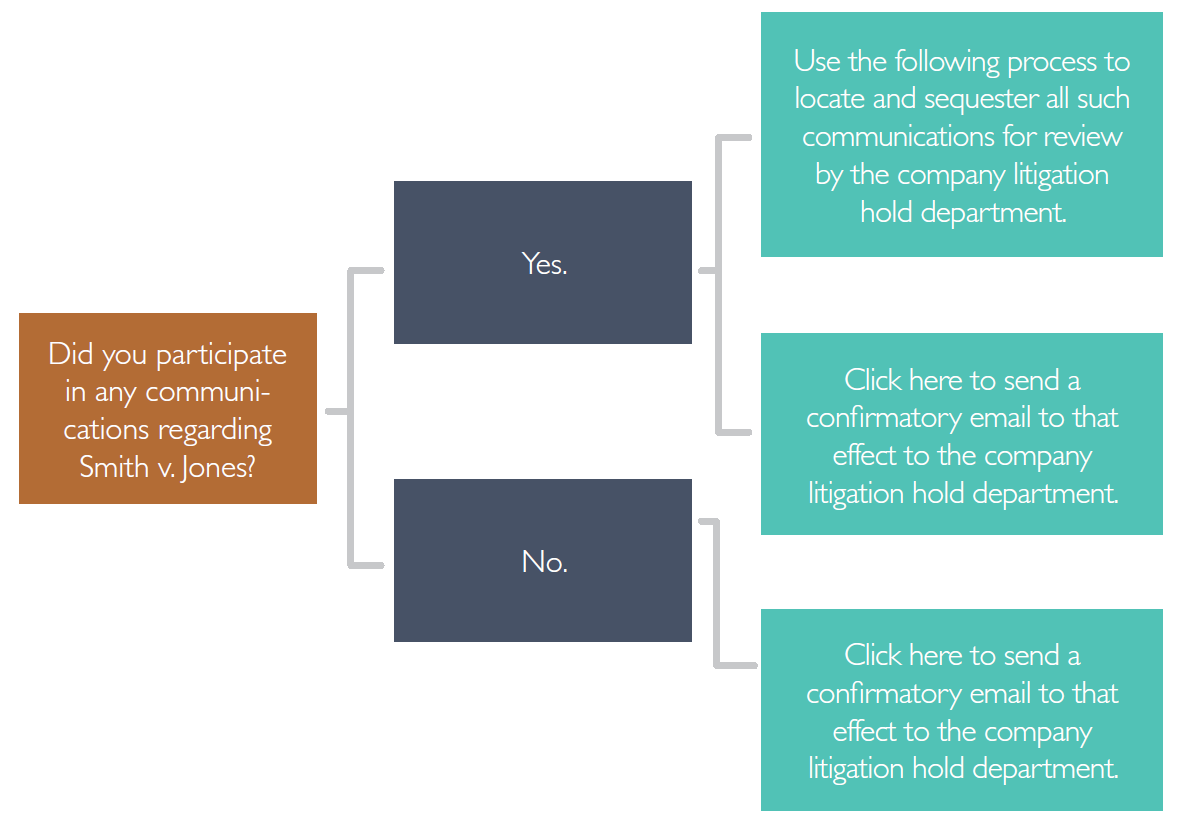The proper application of legal operations techniques and technology can greatly bolster the broader goal of good law department management.
ACC has a simple, clear definition of Legal Operations: A discipline whose goal is to “make law departments more effective and efficient.”
Legal Operations is a “hub” of corporate legal departments because it acts as a centralized core for coordinating and managing the following essential law department functions:
- Strategic planning;
- Vendor management;
- Metrics and data analytics;
- Team-building and communications;
- Process improvement and technology;
- Knowledge management;
- Financial planning;
- Managed services and legal practice outsourcing;
- Data governance; and
- eDiscovery.
Technology can and must play a pivotal role in each of these areas.
Strategic planning
For many years, most legal department strategic planning consisted largely of budget projections at the macro level and managing bet-the-farm litigation at the micro level. It’s true that the GC and his or her staff often assumed a major part in overall company strategy, but that role was more or less limited to providing legal counsel for senior management as they developed their own strategic plans, distant and apart from the legal operations department.
However, in the past decade, there has been a distinct shift in expectations, not only with respect to strategic planning but in most aspects of law department management. The law department is now expected to be run like all the other service centers in the company, as an independent business unit with its own P&L calculations, operational transparency, and strategic planning.
Fortunately, there are many tech tools that can help you with strategic planning and the other aspects of service management. Strategic planning initiatives should take advantage of digital knowledge management assets and research tools to evaluate the future environment, mindmapping, or whiteboard apps for brainstorming, process mapping tools to flesh out current versus desired future states, project management tools to implement the chosen strategy, and the department’s intranet to house the resulting documents for easy, universal reference. Strategic planning must also separately address technology investment and development as one of its chief components.
Vendor management
Technology is also essential in vendor management: eBilling apps go beyond reviewing and processing bills, helping to keep your budget on track (or let you know when it’s going off the rails). Various databases can help you understand how your vendors stack up in terms of pricing and performance. Effective dashboards can help your vendor managers and senior legal staff understand your vendor landscape at a glance. (See this article)
Metrics and data analytics
Metrics and data analytics designed to help you better understand and manage your law department are, these days, almost completely technology- dependent. It simply doesn’t make sense to use pieces of paper to track your legal expenditures, the work your department does, litigation and regulatory trends, compliance heatmaps, and all the other things effective metrics and data analytics can do for you. At the least, you will be using a spreadsheet system; at best, you will be using one or more good database applications and dashboards to help you generate and digest this kind of vital information.
Communications or team-building
In today’s world, in which many legal departments are operating on a national or global basis, and many companies are allowing or even encouraging work-from-home arrangements, legal department members are often geographically dispersed, making it difficult to rely on traditional face-to-face interactions as a communications or team-building model.
Once again, the appropriate use of technology can help bridge the gap. A decade ago, video conferencing was expensive, sluggish, and irritating; today, video conferencing is becoming easy, inexpensive, and unobtrusive. Business social media platforms such as Jive, Connections, and SharePoint have become more polished and widespread. Furthermore, there are many applications that enable real-time collaboration. The only trick is developing a comprehensive integration strategy to ensure that your staff takes proper advantage of these and similar team-building and communications tools.
Process improvement
Process improvement is probably the single most valuable discipline that legal operations can bring to a legal department. All of the steps in process improvement — from gathering metrics and conducting employee and client surveys, to performing current state process mapping reviews, to developing future state process recommendations, to implementing those recommendations — can be enhanced through the use of technology tools. Furthermore, many process improvement studies will conclude that better utilization of existing or proposed technology will be able to substantially improve the value your department adds to your company. For example, many legal departments that have conducted process reviews conclude that legal service request intake, tracking, and response can be much improved through the creation and systematic use of intranet legal service request portals.
Knowledge management
As I’ve covered both in other columns and in the ACC Knowledge Management Toolkit at some length, legal and compliance personnel are knowledge workers, and the easier you make it for your staff to access the knowledge assets they need to do their jobs, the more efficient and effective your department will be.
The proper use of knowledge management technology is transformative. Lawyers can draw upon and leverage, share, and enrich others both inside and outside the legal department by developing effective intranet libraries, precedent libraries, smart guides, skills inventories, mindmaps, wikis, and other digital platform tools. In a world where knowledge is power, effective knowledge management is critical to empowering the legal department and the enterprise as a whole.
Financial planning
I remember a time when the only financial planning expected of legal departments was budget creation, and that was typically a soft skill in many corporate law departments.
Not anymore. Corporations expect their legal departments to engage in the same types of forecasting and budget justification as their finance and IT departments. This means maintaining accurate financial records and tools for snapshots and updates, regulatory, legislative and judicial environment forecasting, and dashboards that adjust on a frequent or on-demand basis. Doing this is impossible without the right technology tools.
Managed services and legal practice
A focus on managed services and legal practice outsourcing may not be appropriate for every law department right now. But as third-party service providers become less expensive, more capable, more modular, and easier to use, they are services that all departments need to at least consider. Managed services, such as the use of contract lawyers and legal practice outsourcing, would not be practical without the technology that enables clients to manage the services they are purchasing. With the right mix of technology and processes, customers can make sure they stay on top of what their providers are doing by monitoring workload and expense and keeping in frequent communication with their counterparts. (See this article)
Data governance
Good data governance is becoming increasingly critical in the context of law department management. It requires the curation of your information assets so that irrelevant or outdated assets are eliminated or updated. This ensures that your assets comply and align with your data retention policies and procedures and allows appropriate access by any persons who should have it — and no one else. Obviously, technology can and should play a substantial role in assisting with the process, and in designing the access processes.
eDiscovery
Any effective approach to eDiscovery centers on technology. AI systems could be used to identify responsive documents and set up preliminary “canned” response sets for different kinds of litigation and create discovery requests. Smart guides can be used to notify and walk discovery hold recipients through the process.1 Project management tools should be used to map out milestones and responsibilities.
1 For example, you could set up a hyperlinked smart-guide in either PowerPoint, SharePoint, or your company intranet along the following lines as Figure 1:

The corporate legal profession is changing very rapidly, both in response to changes in the global business environment and to the dramatic acceleration we are experiencing in technology. Good law department management requires not just keeping up with things as they are, but also anticipating what the next move will be. Using technology to increase effective legal operations functions is the best way to help your department manage itself successfully.




